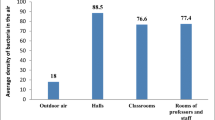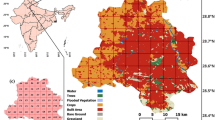Abstract
Nowadays, workers in petrochemical industry might be exposed to organic volatile compounds, including benzene, toluene, ethylbenzene, and xylene (BTEX). The aim of this study was to investigate the concentration of BTEX contaminations and the biological index in employees of petrochemical sites in the west of Iran. The study was conducted as a cross-sectional study on 30 stations and 60 inhalation and biological samples collected in winter and summer. The NIOSH 2549 and 1501 methods were used for sampling and analyzing the inhaled samples. Gas chromatography-mass spectrometry (GC-MS) equipped with flame ionization detector and high-performance liquid chromatography (HPLC) was used to measure the volatile contaminations. The results showed that the mean concentrations of benzene, toluene, and xylene were significantly different in summer and winter. Significant and strong correlations were observed between the concentrations of benzene, toluene, and xylene and the biological values (r > 0.7). Moreover, the concentration of benzene (β = 0.836), toluene (β = 0.718), and xylene (β = 0.786) predicted the changes in their biological values. Given the hazardous concentrations of benzene and toluene in industrial plants and the correlation of the concentration levels and biological values, management and control strategies should be implemented to eliminate and reduce the pollutants and the effects.




Similar content being viewed by others
Notes
American Conference of Governmental Industrial Hygienists
International Agency for Research on Cancer
Environmental Protection Agency
World Health Organization
Solid phase extraction
High efficiency liquid chromatography
References
Al Zabadi, H., Ferrari, L., Sari-Minodier, I., Kerautret, M.-A., Tiberguent, A., Paris, C., & Zmirou-Navier, D. (2011). Integrated exposure assessment of sewage workers to genotoxicants: An urinary biomarker approach and oxidative stress evaluation. Environmental Health, 10(1), 23. https://doi.org/10.1186/1476-069X-10-23.
Al-Wahaibi, A., & Zeka, A. (2015). Health impacts from living near a major industrial park in Oman. BMC Public Health, 15(1), 524.
Carere, A., Antoccia, A., Industrial, D. C.-O. H. and, & 1999, U (1998). Genetic effects of petroleum fuels: II. Analysis of chromosome loss and hyperploidy in peripheral lymphocytes of gasoline station attendants. Environmental and Molecular Mutagenesis, 32(2), 130–138.
Carrieri, M., Bonfiglio, E., Scapellato, M. L., Maccà, I., Tranfo, G., Faranda, P., et al. (2006). Comparison of exposure assessment methods in occupational exposure to benzene in gasoline filling-station attendants. Toxicology letters, 162(2–3), 146–152.
Carrieri, M., Tranfo, G., Pigini, D., Paci, E., Salamon, F., Scapellato, M. L., et al. (2010). Correlation between environmental and biological monitoring of exposure to benzene in petrochemical industry operators, 192, 17–21. https://doi.org/10.1016/j.toxlet.2009.07.015.
Cassinelli, M., & O’Connor, P. (1994). NIOSH manual of analytical methods.
Davoud Shahmohammadi, S. K. Z. (2018). Investigation of the relationship between inhaled benzene, toluene, ethylbenzene, and xylene concentrations and the urine metabolites levels in people working at a petrochemical complex. Journal of Occupational Hygiene Engineering, 5(2), 46–54. https://doi.org/10.21859/johe-5.2.46.
Dural, E., Mergen, G., İşiner, B., Boran, E., Bacaksız, A., & Söylemezoğlu, T. (2011). Determination of BTEX metabolites in urine and plasma of occupationally exposed workers and non-exposed individuals. Toxicology Letters, 205(S122), S122. https://doi.org/10.1016/j.toxlet.2011.05.438.
Frigerio, G., Campo, L., Mercadante, R., Mielżyńska-Švach, D., Pavanello, S., & Fustinoni, S. (2020). Urinary mercapturic acids to assess exposure to benzene and other volatile organic compounds in coke oven workers. International Journal of Environmental Research and Public Health, 17(5), 1801. https://doi.org/10.3390/ijerph17051801.
Greenland, J. N., & C.-R. S. (2009). MS comprehensive exama-simulated gasoline release. In MS comprehensive exama-simulated gasoline release. Pennsylvania (1st ed., pp. 2–4). Pennsylvania: Shippensburg University.
Gunnar, W. (2007). Urban flux measurements of energy and trace gases from a tall lattice tower near central Houston, TX. A report to the Texas Air Research Center (TARC) (Vol. 4, pp. 40–70). Lamar University TX.
Heibati, B., Godri, K. J., Yazdani, J., & Ducatman, A. (2018). Biomonitoring-based exposure assessment of benzene, toluene, ethylbenzene and xylene among workers at petroleum distribution facilities. Ecotoxicology and Environmental Safety, 149(October 2017), 19–25. https://doi.org/10.1016/j.ecoenv.2017.10.070.
Huang, M. Y. (1994). Mixed exposure of workers to toluene and xylenes. I. Metabolism. Occupational and Environmental Medicine, 51, 42–46.
Keramati, A., Nabizadeh Nodehi, R., Rezaei Kalantary, R., Nazmara, S., Zahed, A., Azari, A., et al. (2016). TVOCs and BTEX concentrations in the air of south pars special economic energy zone. Journal of Mazandaran University of Medical Sciences, 25(133), 236–244.
Keshavarzi Shirazi, H. (2004). Determining the amount of gasoline wasted at gas stations in Tehran, Iran, and methods for controlling, limiting, and recycling the wastage. Environmental Studies Journal, 36(33–40).
Khan, F. I., & Ghoshal, K. A. (2000). Removal of volatile organic compounds from polluted air. Journal of Loss Prevention in the Process Industries, 13(6), 527–545. https://doi.org/10.1016/S0950-4230(00)00007-3.
Lam, P. K., & Gray, J. S. (2003). The use of biomarkers in environmental monitoring programmes. Marine Pollution Bulletin, 46(2), 182–186. https://doi.org/10.1016/S0025-326X(02)00449-6.
Liu, F. F., Escher, B. I., Were, S., Duffy, L., & Ng, J. C. (2014). Mixture effects of benzene, toluene, ethylbenzene, and xylenes (BTEX) on lung carcinoma cells via a hanging drop air exposure system. Chemical Research in Toxicology, 27(6), 952–959. https://doi.org/10.1021/tx5000552.
Mitra, S., & Roy, P. (2011). BTEX: A serious ground-water contaminant. Research Journal of Environmental Sciences, 5(5), 394–398. https://doi.org/10.3923/rjes.2011.394.398.
Moradi, M., Hopke, P., Hadei, M., Eslami, A., Rastkari, N., Naghdali, Z., Kermani, M., Emam, B., Farhadi, M., & Shahsavani, A. (2019). Exposure to BTEX in beauty salons: Biomonitoring, urinary excretion, clinical symptoms, and health risk assessments. Environmental Monitoring and Assessment, 191(5), 286. https://doi.org/10.1007/s10661-019-7455-7.
Moradpour, Z., Bahrami, A., Sultanian, A., Shahna, F., & Negahban, A. (2015). Seasonal comparison of emissions of volatile organic compounds in the chemical industry based on oil during the years 2013 and 2014. Iran Occupational Health, 11(6), 55–63.
Moro, A. M., Brucker, N., Charão, M., Bulcão, R., Freitas, F., Baierle, M., Nascimento, S., Valentini, J., Cassini, C., Salvador, M., Linden, R., Thiesen, F., Buffon, A., Moresco, R., & Garcia, S. C. (2012). Mutation research/genetic toxicology and environmental mutagenesis evaluation of genotoxicity and oxidative damage in painters exposed to low levels of toluene. Mutation Research, Genetic Toxicology and Environmental Mutagenesis, 746(1), 42–48. https://doi.org/10.1016/j.mrgentox.2012.02.007.
Mosaddegh Mehrjerdi, M. H., Tahmasebi, N., Abadi, Barkhordari Firooz, & A., Fallahzadeh, H., Esmaielian, S., & Soltanizadeh, K. (2014). The investigation of exposure to benzene, toluene, ethylbenzene and xylene (BTEX) with solid phase microextr action method in gas station in Yazd province. ISMJ, 16(6), 419–427.
National Toxicology Program. (2011). NTP 12th report on carcinogens. Report on carcinogens : carcinogen profiles, 12, iii–499.
Pandya, G. H., Gavane, A. G., & Kondawar, V. K. (2006). Assessment of occupational exposure to VOCs at the gantry gasoline terminal. Journal of Environmental Science & Engineering, 48(3), 175–182 http://www.ncbi.nlm.nih.gov/pubmed/17915780.
Periago, J. F., & Prado, C. (2005). Evolution of occupational exposure to environmental levels of aromatic hydrocarbons in service stations. The Annals of Occupational Hygiene, 49(3), 233–240. https://doi.org/10.1093/annhyg/meh083.
Philippat, C., Wolff, M. S., Calafat, A. M., Ye, X., Bausell, R., & M., M., et al. (2013). Prenatal exposure to environmental phenols: Concentrations in amniotic fluid and variability in urinary concentrations during pregnancy. Environmental Health Perspectives, 121(10), 1225–1231. https://doi.org/10.1289/ehp.1206335.
Rafiee, A., Delgado-Saborit, J. M., Sly, P. D., Amiri, H., & Hoseini, M. (2019). Lifestyle and occupational factors affecting exposure to BTEX in municipal solid waste composting facility workers. Science of the Total Environment, 656, 540–546. https://doi.org/10.1016/j.scitotenv.2018.11.398.
Rekhadevi, P., Mahboob, M., Rahman, M., & Grover, P. (2011). Determination of genetic damage and urinary metabolites in fuel filling station attendants. Environmental and Molecular Mutagenesis, 52(4), 310–318.
Robert Schnatter, A., Kerzic, P. J., Zhou, Y., Chen, M., Nicolich, M. J., Lavelle, K., Armstrong, T. W., Bird, M. G., Lin, L., Fu, H., & Irons, R. D. (2010). Peripheral blood effects in benzene-exposed workers. Chemico-Biological Interactions, 184(1–2), 174–181. https://doi.org/10.1016/j.cbi.2009.12.020.
Roukos, J., Riffault, V., Locoge, N., & Plaisance, H. (2009). VOC in an urban and industrial harbor on the French North Sea coast during two contrasted meteorological situations. Environmental Pollution, 157(11), 3001–3009. https://doi.org/10.1016/j.envpol.2009.05.059.
Shammas, P. (2001). Iran: Review of petroleum developments and assessments of the oil and gas fields. Energy Exploration & Exploitation, 19(2), 207–260.
Shinohara, N., Okazaki, Y., Mizukoshi, A., & Wakamatsu, S. (2019). Exposure to benzene, toluene, ethylbenzene, xylene, formaldehyde, and acetaldehyde in and around gas stations in Japan. Chemosphere, 222(1), 923–931. https://doi.org/10.1016/j.chemosphere.2019.01.166.
Swaen, G. M. H., van Amelsvoort, L., Twisk, J. J., Verstraeten, E., Slootweg, R., Collins, J. J., & Burns, C. J. (2010). Low level occupational benzene exposure and hematological parameters. Chemico-Biological Interactions, 184(1–2), 94–100. https://doi.org/10.1016/j.cbi.2010.01.007.
Tsai, S. P., Fox, E. E., Ransdell, J. D., Wendt, J. K., Waddell, L. C., & Donnelly, R. P. (2004). A hematology surveillance study of petrochemical workers exposed to benzene. Regulatory Toxicology and Pharmacology, 40(1), 67–73. https://doi.org/10.1016/j.yrtph.2004.05.010.
Tualeka, A. R., Pathak, Y., Wibrata, D. A., Ilmi, B., Ahsan, A., Rahmawati, P., Russeng, S. S., Wahyu, A., Maspiyah, M., & Sukarmin, S. (2019). Relationship of benzene exposure to trans, trans-muconic acid and blood profile of shoe workers in romokalisari Surabaya, Indonesia. Open Access Macedonian Journal of Medical Sciences, 7(5), 816–823. https://doi.org/10.3889/oamjms.2019.136.
Acknowledgements
The author would like to thank Mahshahr Petrochemical Company and the workers for their valuable cooperative attitudes.
Funding
This study was supported by the Student Research Committee, Ahvaz Jundishapur University of Medical Sciences, Ahvaz, Iran (Registration No.98s70).
Author information
Authors and Affiliations
Corresponding author
Ethics declarations
Conflict of interest
The authors declare no competing interests.
Additional information
Publisher’s note
Springer Nature remains neutral with regard to jurisdictional claims in published maps and institutional affiliations.
Rights and permissions
About this article
Cite this article
Rashnuodi, P., Dehaghi, B.F., Rangkooy, H.A. et al. Evaluation of airborne exposure to volatile organic compounds of benzene, toluene, xylene, and ethylbenzene and its relationship to biological contact index in the workers of a petrochemical plant in the west of Iran. Environ Monit Assess 193, 94 (2021). https://doi.org/10.1007/s10661-021-08878-6
Received:
Accepted:
Published:
DOI: https://doi.org/10.1007/s10661-021-08878-6




